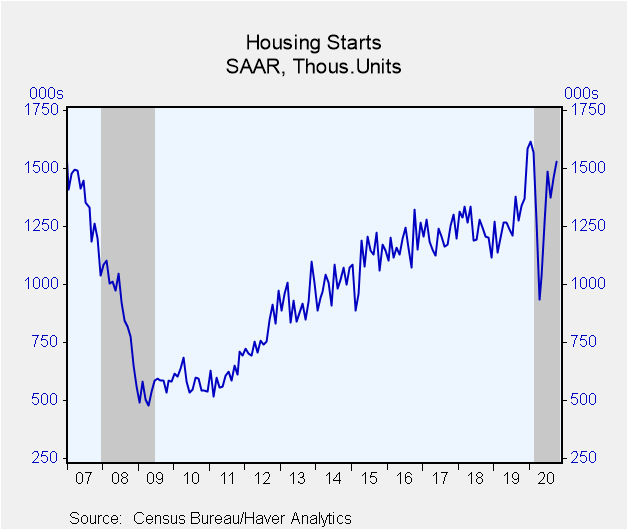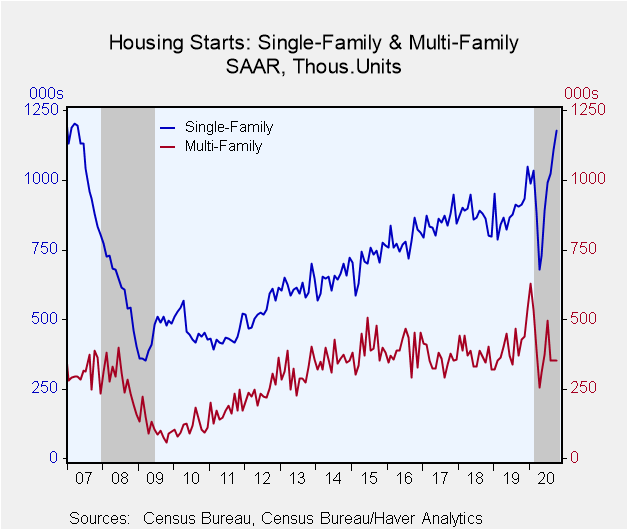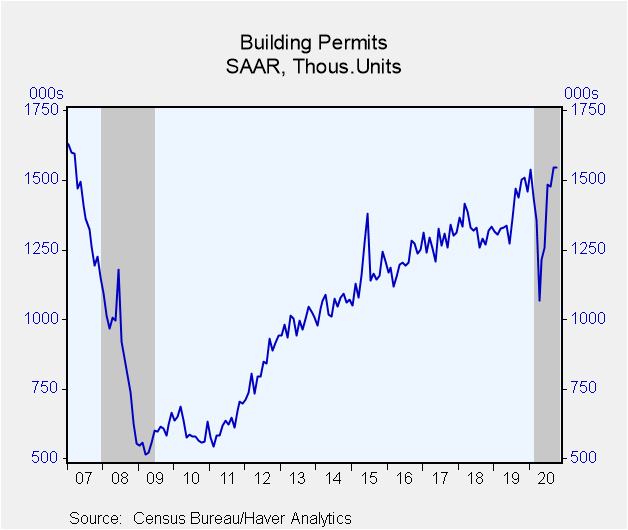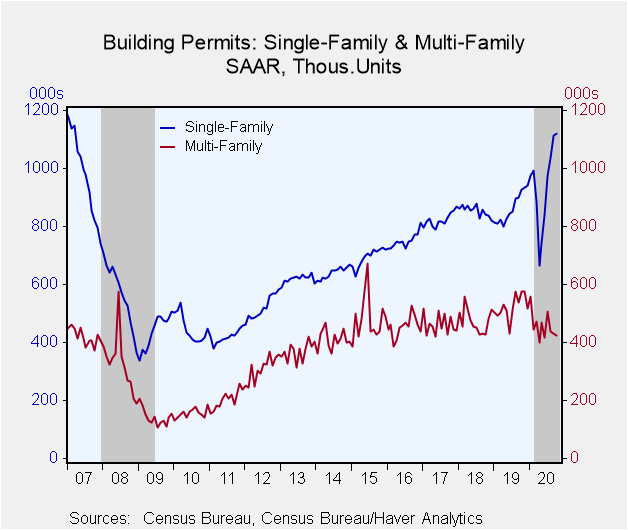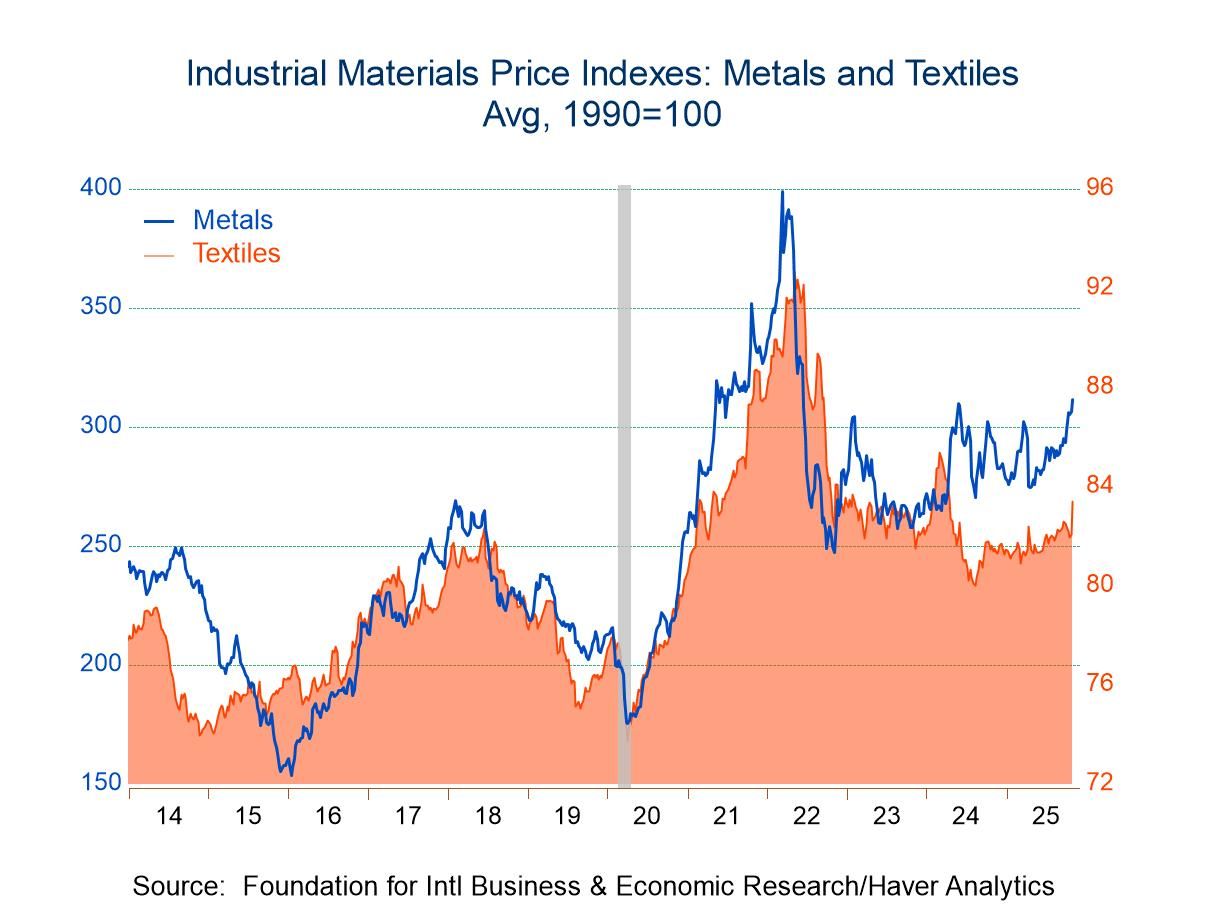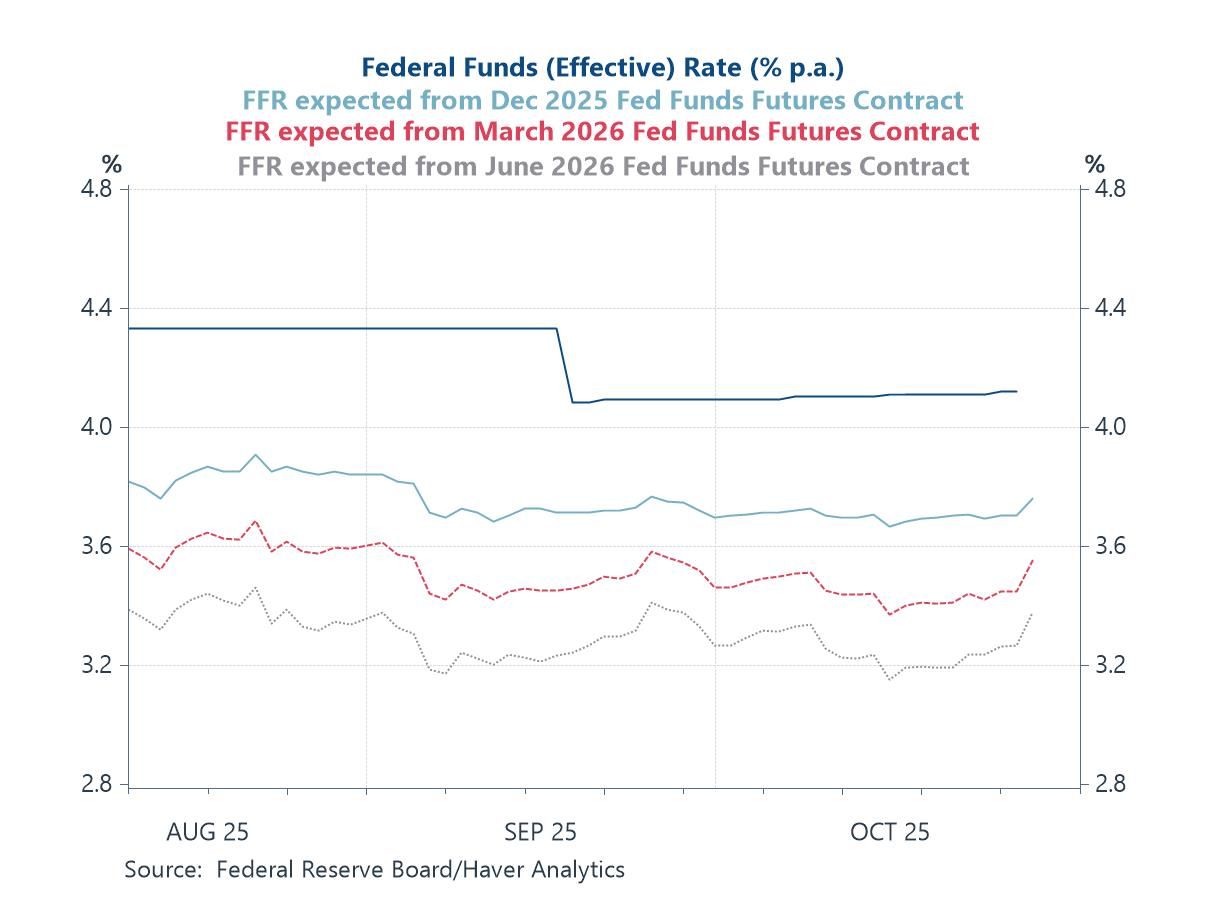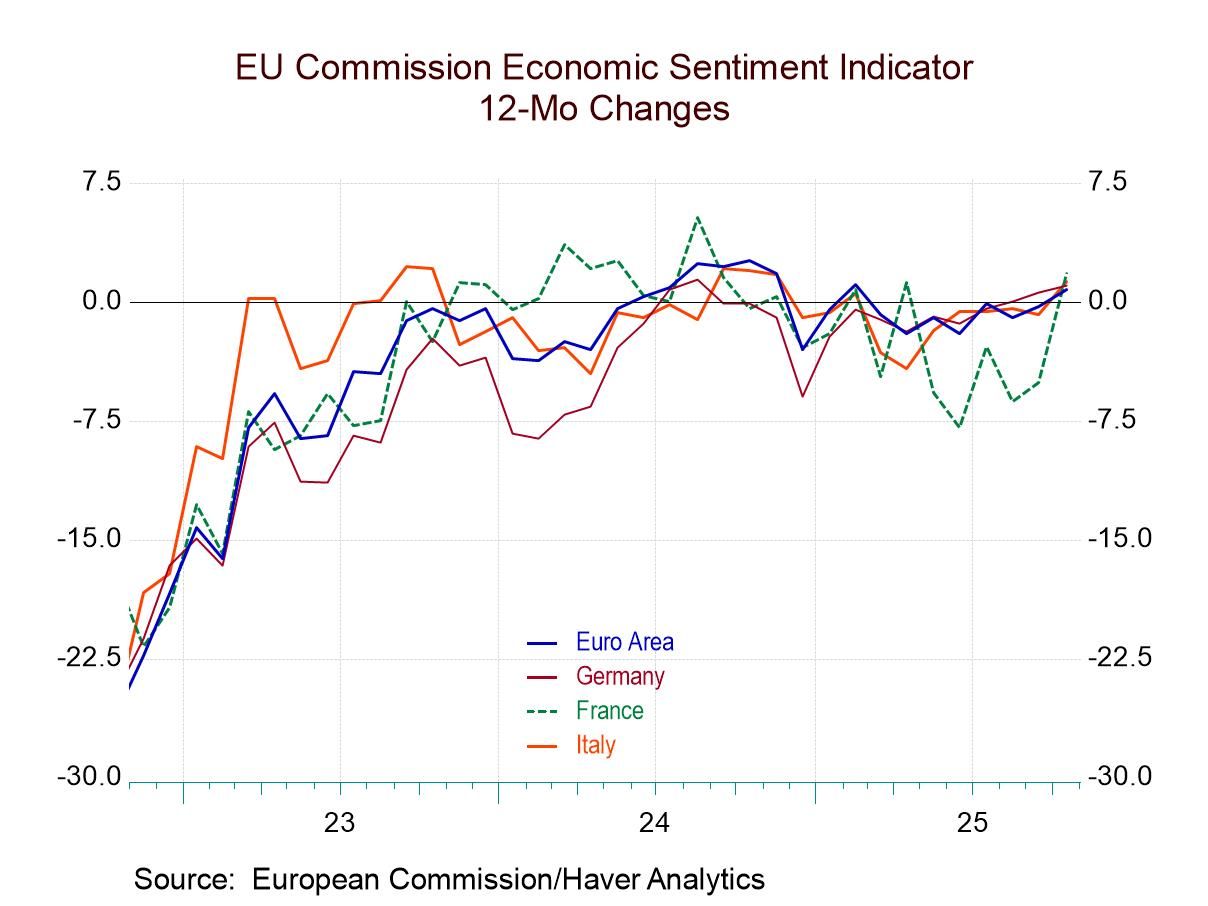 Global| Nov 18 2020
Global| Nov 18 2020U.S. Housing Starts Improve Again During October
by:Tom Moeller
|in:Economy in Brief
Summary
• Single-family home building increases to highest level since April 2007. • Building permits hold steady. Housing starts rose 4.9% (14.2% y/y) in October to 1.530 million (SAAR) from 1.459 million in September, revised from 1.415 [...]
• Single-family home building increases to highest level since April 2007.
• Building permits hold steady.
Housing starts rose 4.9% (14.2% y/y) in October to 1.530 million (SAAR) from 1.459 million in September, revised from 1.415 million. Despite the increase, starts remained 5.4% below their January peak of 1.617 million. The Action Economics Forecast Survey expected 1.450 million starts in October.
Starts of single-family homes rose 6.4% last month (29.4% y/y) to 1.179 million from an unrevised 1.108 million in September. The latest level was roughly two-thirds above the April low. Accompanying the increase in single-family starts was steadiness in multi-family starts at 351,000 (-18.2% y/y), revised from 307,000. Starts have been at that level for three months, down 44.1% from the peak this past January.
Building permits were unchanged at a little-revised 1.545 million (2.8% y/y). It remained the highest level of permits since March 2007. Permits to build single-family homes rose 0.6% (20.6% y/y) to 1.120 million following five months of strong increase. Permits to build multi-family homes eased 1.6% (-26.0% y/y) to 425,000 after falling 1.4% in September.
By region, housing starts in the Northeast weakened by 38.6% (-32.8% y/y) to 78,000, the lowest level since May. In the South, starts rose 12.9% (24.3% y/y) to 859,000 following September's 8.1% rise. In the West, starts improved 4.2% (5.4% y/y) to 374,000, the highest level since February. Housing starts in the Midwest gained 3.3% (23.0% y/y) to 219,000.
The housing starts and permits figures can be found in Haver's USECON database. The expectations figure is contained in the AS1REPNA database.
The Federal Reserve's New Framework: Context and Consequences from Fed Vice Chair Richard H. Clarida can be found here.
| Housing Starts (000s, SAAR) | Oct | Sep | Aug | Oct Y/Y % | 2019 | 2018 | 2017 |
|---|---|---|---|---|---|---|---|
| Total | 1,530 | 1,459 | 1,373 | 14.2 | 1,295 | 1,248 | 1,207 |
| Single-Family | 1,179 | 1,108 | 1,022 | 29.4 | 893 | 872 | 851 |
| Multi-Family | 351 | 351 | 351 | -18.2 | 403 | 376 | 356 |
| Starts By Region | |||||||
| Northeast | 78 | 127 | 86 | -32.8 | 115 | 111 | 112 |
| Midwest | 219 | 212 | 241 | 23.0 | 170 | 170 | 180 |
| South | 859 | 761 | 704 | 24.3 | 689 | 630 | 602 |
| West | 374 | 359 | 342 | 5.4 | 322 | 337 | 314 |
| Building Permits | 1,545 | 1,545 | 1,476 | 2.8 | 1,386 | 1,329 | 1,285 |
Tom Moeller
AuthorMore in Author Profile »Prior to joining Haver Analytics in 2000, Mr. Moeller worked as the Economist at Chancellor Capital Management from 1985 to 1999. There, he developed comprehensive economic forecasts and interpreted economic data for equity and fixed income portfolio managers. Also at Chancellor, Mr. Moeller worked as an equity analyst and was responsible for researching and rating companies in the economically sensitive automobile and housing industries for investment in Chancellor’s equity portfolio. Prior to joining Chancellor, Mr. Moeller was an Economist at Citibank from 1979 to 1984. He also analyzed pricing behavior in the metals industry for the Council on Wage and Price Stability in Washington, D.C. In 1999, Mr. Moeller received the award for most accurate forecast from the Forecasters' Club of New York. From 1990 to 1992 he was President of the New York Association for Business Economists. Mr. Moeller earned an M.B.A. in Finance from Fordham University, where he graduated in 1987. He holds a Bachelor of Arts in Economics from George Washington University.


